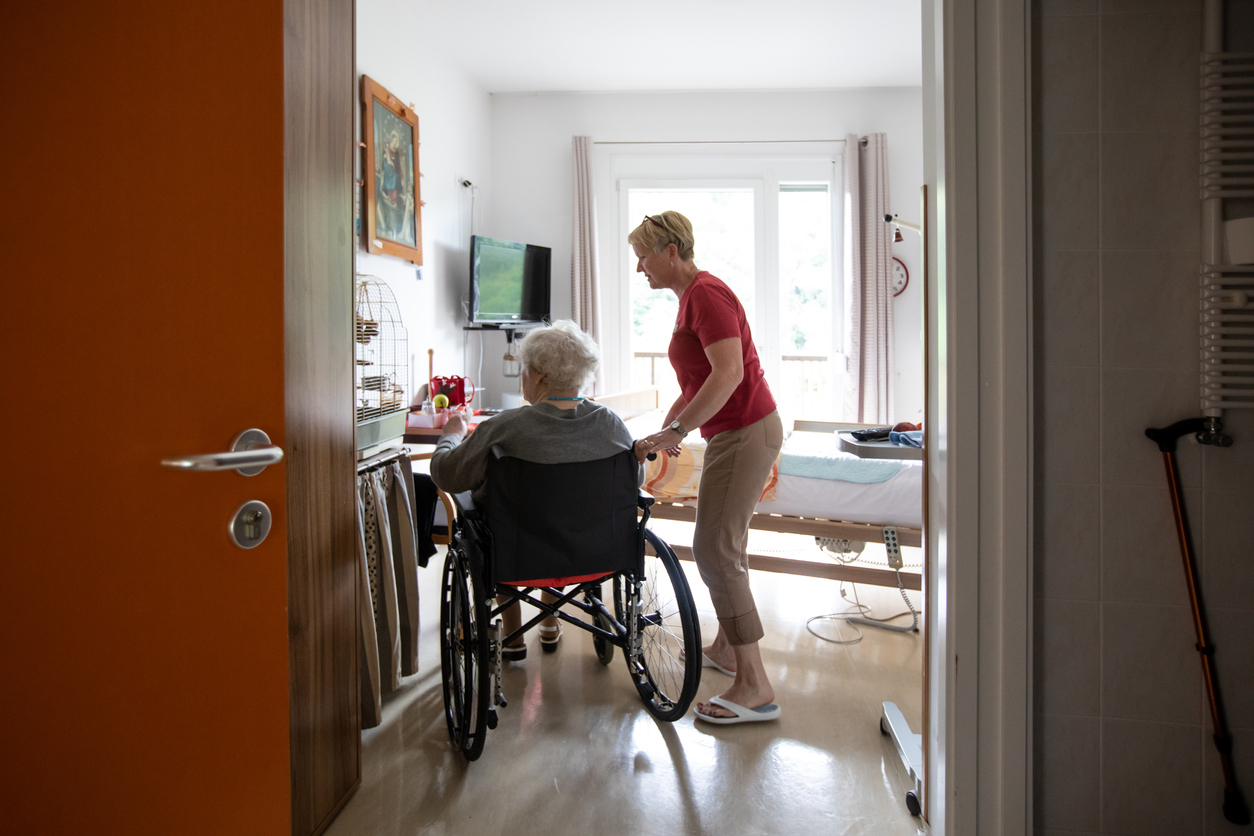Transforming Your Home for Home-Based Healthcare
Some factors to consider before you begin

January 11, 2024
By Emila Smith
In the era of booming telehealth and home-based care, the ability to transform a home into a comfortable, efficient healthcare space has become increasingly important; whether you’re caring for an elderly family member, managing a chronic illness, or undergoing rehabilitation, a well-adapted home can significantly improve the quality of care and daily living.
The U.S. home healthcare market is expected to grow from $96.08 billion in 2023 to $156.28 billion by 2030, at a compound annual growth rate of 7.2%. This growth is driven by various factors, including an aging population, massive technological advancements and a growing preference for home-based healthcare services over more traditional hospital settings.
Understanding the basics
Home-based healthcare can range from basic medical care to comprehensive therapy and rehabilitation services, so before making any changes, it’s crucial to understand the specific healthcare needs of the individual. This could involve consulting with healthcare professionals, considering mobility issues, and/or planning for specialized medical equipment; once you have a clear understanding of these needs, you can start planning the necessary home modifications to best suit the circumstances and achieve the most supportive outcomes.
A safe and accessible environment
The primary goal in adapting your home for healthcare is to ensure safety and accessibility. This might include:
- Installing grab bars and handrails: These are essential in bathrooms and other areas where balance and support are necessary.
- Widening doorways: To accommodate wheelchairs or walkers, doorways may need to be widened.
- Ramps and lifts: If there are steps leading to your home or within it, consider installing ramps or lifts for easier access.
- Non-slip flooring: Reducing the risk of falls is critical, especially in bathrooms and kitchens where floors can become slippery.
Setting up a dedicated healthcare space
Having a specific area in your home dedicated to healthcare can make daily routines more manageable. This space should be:
- Well-lit and ventilated:: Good lighting and air circulation are important for both the patient and the caregiver.
- Equipped with necessary supplies: Keep all necessary medical supplies, medications, and equipment within easy reach.
- Comfortable: Include a comfortable chair or bed, depending on the patient’s individual needs and preferences.
Investing in smart home technology
Smart home technology can be an absolute game-changer in home-based healthcare settings. Consider the following:
- Remote monitoring systems: These systems allow caregivers and healthcare professionals to monitor the patient’s condition remotely.
- Voice-activated devices: For individuals with mobility issues, voice-activated devices can control lights, thermostats, and other home appliances.
- Emergency alert systems: Wearable devices that can send an alert in case of a fall or other emergencies are essential for patient safety.
Adapting bathrooms
The bathroom is a critical area that often requires significant modifications, such as:
- Walk-in tubs or shower seats: These can make bathing safer and more accessible.
- Raised toilet seats: These are helpful for individuals with mobility issues.
- Handheld showerheads: These allow for more flexibility and control during bathing.
Making kitchen modifications
The kitchen should also be adapted for easy accessibility; this might involve:
- Lowering countertops: For wheelchair users, lower countertops can make a huge difference.
- Accessible storage: Ensure that frequently used items are within easy reach.
- Adaptive utensils and appliances: Consider utensils with easy-grip handles and appliances with simple, intuitive controls.
Hydration needs
It’s essential to consider the individual’s hydration needs, including the preference for tap water vs mineral water. This can be addressed by ensuring easy access to both, perhaps through a dedicated water dispenser or a well-placed filtration system.
Comfortable and accessible bedrooms
A bedroom should be a sanctuary, especially for someone requiring home-based healthcare:
- Adjustable beds: These can help in positioning the patient comfortably for both resting and certain types of therapy.
- Ample space around the bed: Ensure there is enough room to move around the bed easily, especially if mobility aids are used.
Preparing for emergency situations
Always have a plan for emergencies. This includes:
- Clear pathways: Ensure that there is a clear path for emergency personnel to enter and exit the home.
- Emergency contact list: Keep a list of emergency contact numbers in a visible and accessible place.
Seeking professional advice
Before undertaking any major modifications, it’s wise to consult with healthcare professionals or home modification experts, who can provide valuable insights tailored to your specific situation and needs.
The best possible homecare in comfort
Mindfully transforming your home for home-based healthcare is a step toward ensuring a safe, comfortable, and efficient environment for those needing care. It requires thoughtful planning and consideration when it comes to the unique needs of the individual. With a little extra care and consideration, you can create a space that supports both the physical and emotional well-being of your loved one, ensuring that they receive the very best possible care, all within the comfort of their own home.
(Emila Smith is a London, England-based freelance blogger. Her interests are in sustainability, wellness and the environment. She has grown up around nature and wants to use her knowledge to help and inspire others to adopt a healthy lifestyle.)
